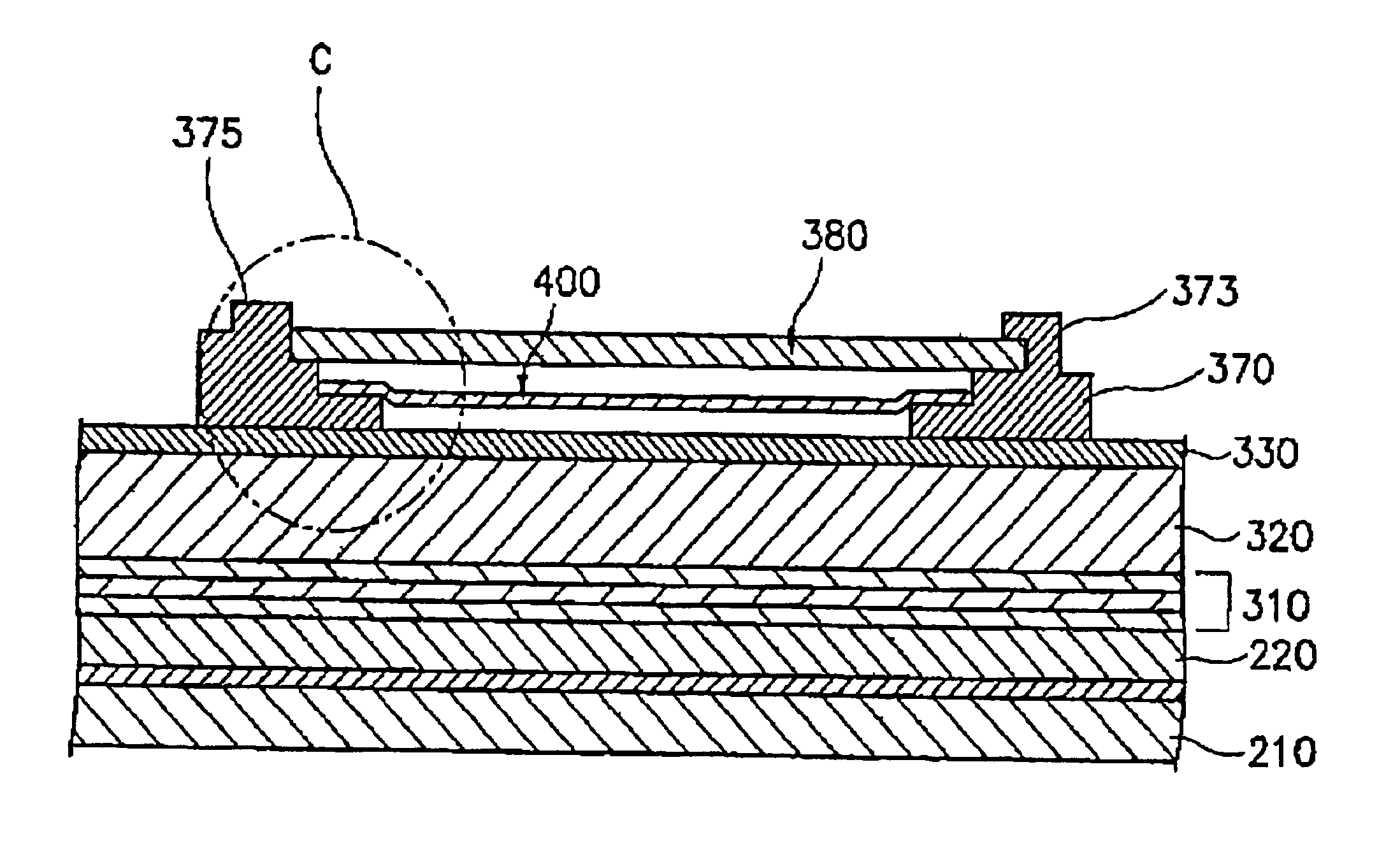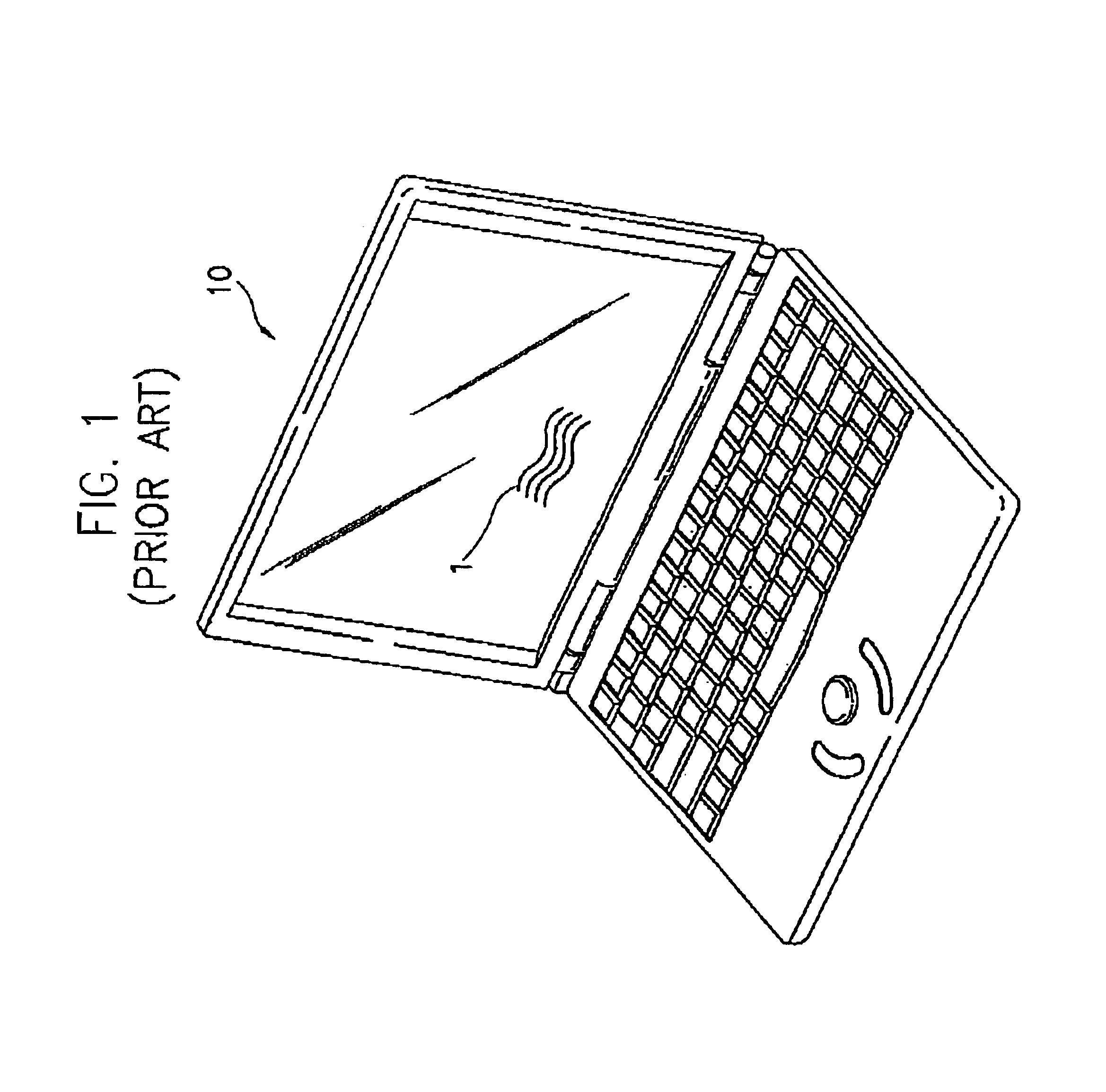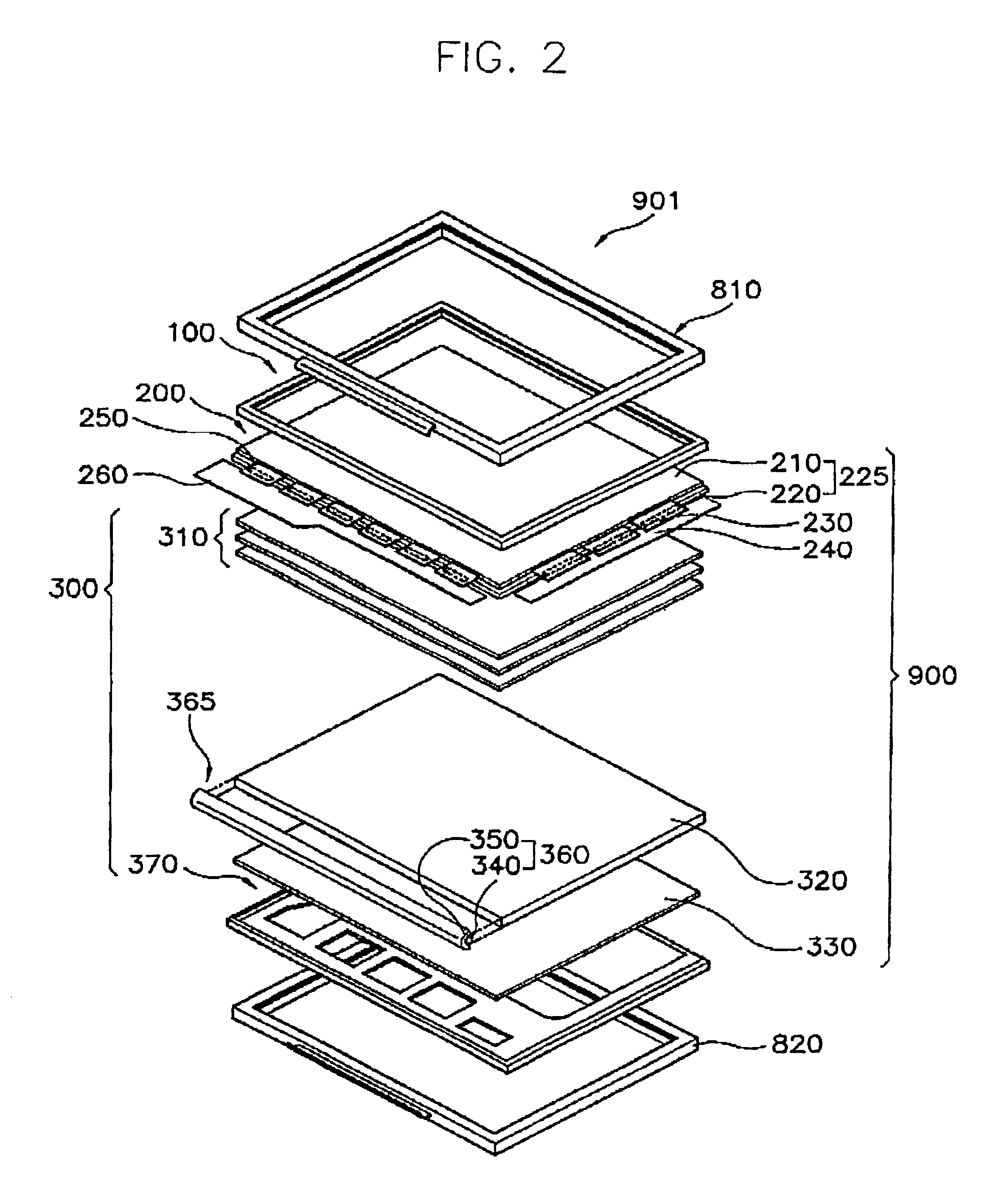Liquid crystal display with a heat shield between the inverter and the backlight assembly
a technology of backlight assembly and liquid crystal display, which is applied in the field of liquid crystal display, can solve the problems of insufficient natural light, inability to perform displaying operation, and inability to use natural light for lcd, and achieve the effect of rapid discharge and blockage of heat generated, rapid discharge of heat, and increase of display area of lcd
- Summary
- Abstract
- Description
- Claims
- Application Information
AI Technical Summary
Benefits of technology
Problems solved by technology
Method used
Image
Examples
first embodiment
[0072]FIG. 6 is the heat shielding film 400 according to the present invention, and FIG. 7 is another embodiment, depicting an enlarged portion “C” from FIG. 5, showing a state that the heat shielding film 400 is applied to an LCD.
[0073]Referring to FIG. 6 or FIG. 7, the heat shielding film 400 has three or more layers. Hereinafter, the three layers are called a first shielding layer 410, an adhesive layer 420 and a second shielding layer 430.
[0074]Referring to FIG. 6, the first shielding layer 410 is comprised of an aluminum alloy or aluminum material having high heat conductivity and has a thin film structure, preferably having a thickness of about 0.1 mm. The first shielding layer 410 has a slightly larger surface area than the inverter module 380 while having a similar shape to the inverter module 380.
[0075]An adhesive having relatively low heat conductivity is entirely coated on a side of the first shielding layer 410 to form the adhesive layer 420. On an upper surface of the a...
second embodiment
[0076]FIGS. 8 and 9 show the present invention.
[0077]Referring to FIG. 8, the heat shielding film 400 of the embodiment also is comprised of three or more layers. A first shielding layer 440 is comprised of an aluminum thin film having high heat conductivity and, preferably, a thickness of about 0.1 mm. The first shielding layer 440 has a slightly larger surface area than the inverter module 380 while having a similar shape to the inverter module 380.
[0078]An adhesives having lower heat conductivity is entirely coated on a Side of the first shielding layer 440 to form the adhesive layer 450. On an upper surface of the adhesive layer 450, there is bonded a second shielding layer 460 having a thickness, preferably, of about 0.1 mm, which is the same as that of the first shielding layer 440, and has a similar shape to the first shielding layer 440. The second shielding layer 460 and a short jaw portion 374 are bonded to each other by a double-faced adhesive tape 401 attached along an e...
third embodiment
[0079]FIGS. 10 and 11 show the present invention.
[0080]Referring to FIG. 10, the heat shielding film 400 of the embodiment is comprised of a single shielding layer 470. That is, the shielding layer 470 has a similar shape to the inverter module 380. A planar surface area of the shielding layer 470 is slightly larger than that of the inverter module 380 to rapidly discharge the heat generated from the inverter module 380. The shielding layer 470 and the short jaw portion 374 are bonded to each other by a double-faced adhesive tape 401 attached along an edge of the shielding layer 470. Reference numerals 406, 407 designate stopper grooves to which a stopper 375 is coupled.
[0081]
TABLE 1TransformerIntegrated CircuitItemsTemperatureTemperatureTemperature of47.7° C.43.1° C.a bottom surface ofinverter module 380Comparison example44.0° C.42.7° C.First experiment35.1° C.33.5° C.Second experiment38.8° C.36.6° C.Third experiment38.5° C.36.0° C.
[0082]Table 1 above shows an experimental result i...
PUM
| Property | Measurement | Unit |
|---|---|---|
| thickness | aaaaa | aaaaa |
| thickness | aaaaa | aaaaa |
| temperature | aaaaa | aaaaa |
Abstract
Description
Claims
Application Information
 Login to View More
Login to View More - R&D
- Intellectual Property
- Life Sciences
- Materials
- Tech Scout
- Unparalleled Data Quality
- Higher Quality Content
- 60% Fewer Hallucinations
Browse by: Latest US Patents, China's latest patents, Technical Efficacy Thesaurus, Application Domain, Technology Topic, Popular Technical Reports.
© 2025 PatSnap. All rights reserved.Legal|Privacy policy|Modern Slavery Act Transparency Statement|Sitemap|About US| Contact US: help@patsnap.com



